"If you think you're too small to have an impact, try going to bed with a mosquito." -Anita Roddick
There's a lot to enjoy when it's warm and tropical, which it is many places this time of year. The flowers are out, the Sun often shines, and there's no shortage of spectacular music. Have a listen to to West Virginia-based band The Recipe, as they rock out (and give a shout-out to Neil Armstrong's moonwalk) in their great song,
But there's an unwelcome visitor that comes along with this kind of weather: the mosquito.
Some people seem to be particularly attractive to mosquitoes, and I happen to be one of them. While the itchy, red bumps that ensue from the bites are annoying enough, the also carry infectious (and sometimes deadly) diseases, including malaria, west nile virus, dengue fever and chikungunya, among others.
Until recently, the only way to prevent infection was through mosquito netting, which can be expensive, are often difficult to use, and don't really allow you to go outside and live the life you normally would. They're great for keeping mosquitoes out while you're trying to sleep, but that's fairly limited protection.
More recently, they've managed to genetically engineer mosquitoes that neither carry nor infect humans with some of these viruses. This is great, but it's a herculean task to replace all the normal mosquitoes that serve as disease vectors with this benign version.
Instead, there may be a simple, inexpensive and incredibly effective way to simply keep mosquitoes away from humans in the first place, and I'm so excited for it I simply had to introduce it you you.
Meet the Kite Patch! A small, square patch that you affix to your clothing, the Kite Patch renders any humans in a large area around it completely invisible to mosquitoes! They're working on a large field test now, and this could be the biggest breakthrough ever in the fight against mosquito-borne diseases.
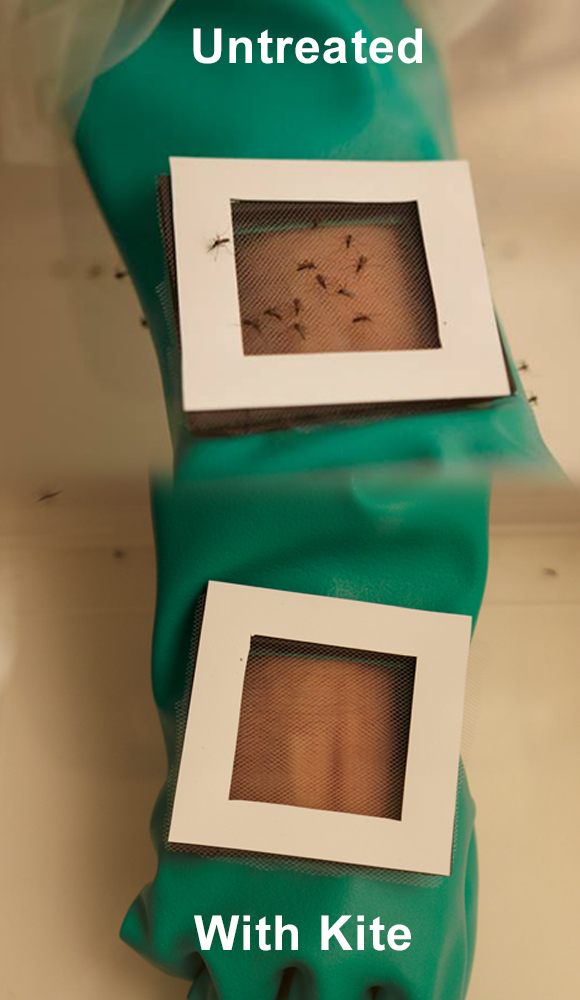 Image credit: Kite Patch on Indiegogo, via http://www.indiegogo.com/projects/kite-patch.
Image credit: Kite Patch on Indiegogo, via http://www.indiegogo.com/projects/kite-patch.
Best of all, you can kick in a relatively small amount of money toward this project and receive a set of patches for yourself, each one which will effectively render you and your entire family immune to mosquitoes for 48 hours! For someone who's basically mosquito-bait like me, this is a summer evening's dream-come-true!
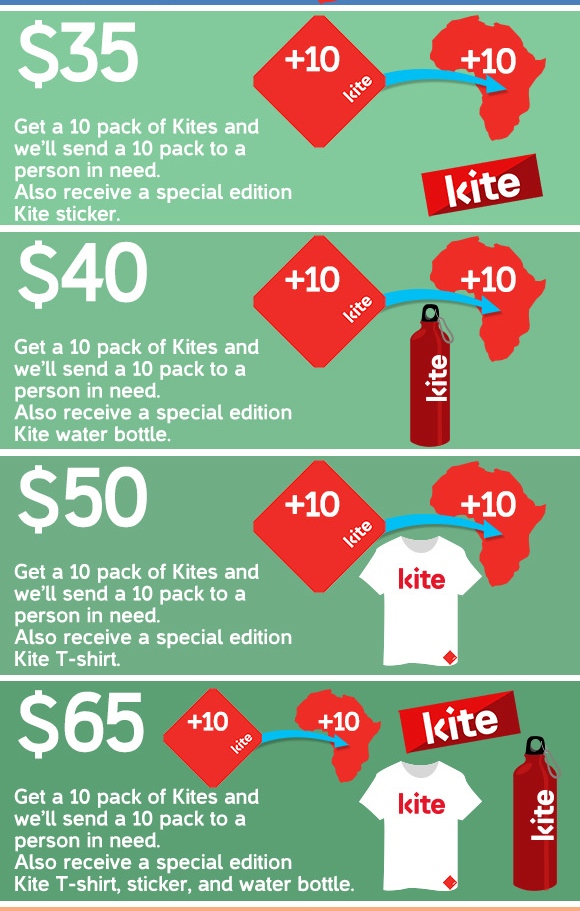 Image credit: Kite Patch on Indiegogo, via http://www.indiegogo.com/projects/kite-patch.
Image credit: Kite Patch on Indiegogo, via http://www.indiegogo.com/projects/kite-patch.
I'm so happy to bring you something remarkable that's also doing such good in the world, and if you've got a few minutes, you might enjoy watching this short video about the Kite Patch.

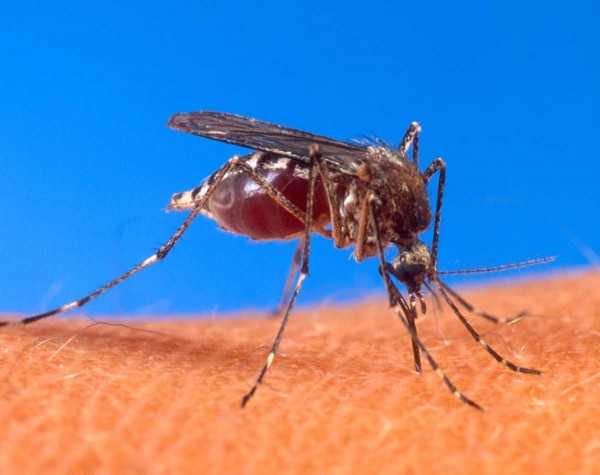
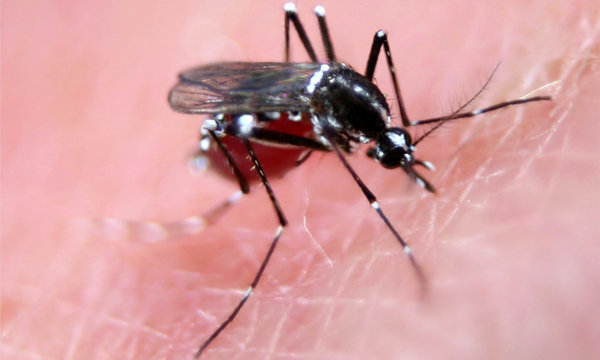
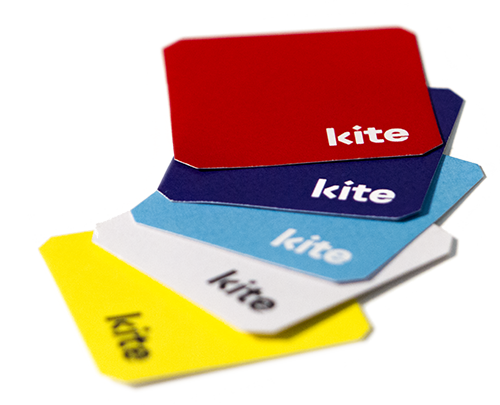
And yes that kite is very nice
But just the other day, I read a New York Times article on a low tech mosquito repellent for out on the patio on a summer evening with friends. The rotating fan. http://www.nytimes.com/2010/07/13/health/13real.html?_r=0
If it's that simple why have I never read about this before.
Well this weekend my wife and friends were sitting eating by the pool. They were bait; I was swimming and OK. My wife said, "we're being eating alive. get the fan."
I had told her about the fan idea and had already gone out and bought a pedestal rotating fan $39.99.
A couple minutes later, no more mosquito bites. Yes, it works great.
But of course I don't have a long enough extension cord to bring my rotating fan everywhere. So kite. Very nice.
A couple of footnotes about kite patches.
"Our U.S. backers will be the first to receive Kite Patches after we gain U.S. EPA approval. " So if you donate money don't expect any patches soon. because...
"If that works, they expect — with EPA approval — to market the three-square-inch patch in the United States in about a year." So another year before EPA approval. "
"The Kite Patch developer, Olfactor Laboratories, says that their product works in much the same way as DEET — blocking mosquitoes’ carbon dioxide receptors. But, the Kite Patch uses chemicals that are so safe they are considered “food grade flavours” by the Food and Drug Administration.
Presumably the patch would be safer than repellents made from chemicals like DEET, PMD, and Picaridin."
OK so a nice test is coming up. We get to see if "food grade flavours" are really safe or just have been assumed safe. I hope they are safe.
I know, I know safe for humans and the rest of nature but not safe for mosquitos.
How exactly does that work?
Tradeoffs, tradeoffs; well I'm hoping for kite approval. I mean there is a war on mosquitos going on out there.
Mosquito borne diseases
http://www.cdc.gov/ncidod/diseases/list_mosquitoborne.htm
will believe it when I see it :) until then, good old Autan :D
I contributed last week, Gamechanger? I don't know, improve quality of life...I hope so. Perhaps we will simply present the biological imperative for mosquitos to evolve within the next couple mosquito generations...inadvertently providing more proof of the evolutionary process.
This is great, but I don't see how it can work. The difficulty with these things isn't really the chemical choice, its making sure the chemical is present in the right concentration where it needs to be - and I don't see how a simple patch can do that. This one is affixed to clothing, so it can't be a drug that alters your sweat.
So...how well does a patch on your arm ensure that there is an appropriate concentration around, say, the backs of your knees? My initial thought is: worse than a spray-on, maybe better than a tabletop candle.
It is not possible for the patch to remove all the CO2 around a person since CO2 will diffuse very quickly
my bet is that the chemicals released by the patch somehow kills the ability of the mosquito to detect CO2 and for that to be effective mosquito will need to come very close to the patch
it will not be a perfect solution but definately very good.
"the team identified several compounds that block mosquitoes from sensing CO2, including 2,3-butanedione, 1-hexanol, 1-butanal, and 1-pentanal. These could very well be the secret ingredients in the Kite Patch... Olfactor Laboratories has been raising money to test the patch in Uganda, which Kite co-founder calls "one of the toughest proving grounds there is" because of its huge mosquito population and high rates of malaria infection. If that works, they expect — with EPA approval — to market the three-square-inch patch in the United States in about a year... The group has already raised money from the Gates Foundation and the National Institute of Health, and they've started an indiegogo campaign to pay for the manufacture. You have until August to invest, and for $10 you can fund 5 patches used in their field testing in Uganda. For $35 you can give 10, and get 10 if they are approved by the EPA."
So they are very serious. Best of luck; marlaria is well terrible.
http://www.sciencedaily.com/releases/2001/08/010828075659.htm
better donate 35$ for irrigation in Uganda so they can plant catnip. repels mosquitos and is also great food rich in vitamins and minerals. :)
is a bit cynical to use Africa as a marketing ploy. Mosquito patch doesn't do anything for Uganda or anything humanitarian.... it's not like it cures aids or cancer... just another commercial product. To say "other products don't work or are toxic" is just the same BS as rest. Would like to see them eat their patches as a proof of concept that their product isn't toxic to a degree. Anyways.. Want to help africa and south asia. Help them to create proper irigation, drain dead canals, properly fight disease carrying insects etc..
Selling them patches is pure capitalism at it's worst. Doesn't do anything about the cause and thus makes it even worse in the long run.
Sinisa Lazarek
Your points are well taken.
Here is a nice summary of the malaria problem and approaches. http://www.gatesfoundation.org/What-We-Do/Global-Health/Malaria Note: though the Gates foundation has given some money to Kite; Kite is not mentioned on the Gates Foundation web site.
As well current price of $3 per Kite patch good for 48hrs seems too expensive for developing countries even if it gets down to $ .03 per patch.
"Eating your Kite patch for malaria" sounds like a good name for their marketing campaign.
There Ethan Siegel stands in some mosquito infested jungle (in his Mr. T outfit of course). Daring mosquitos to bite, none do. Then suddenly, Ethan rips off his Kite patch and eats it. Suddenly, 1000 mosquitos descend upon the unconquerable Ethan; he endures the assault until he reaches in his pocket and opens a package and puts another Kite patch on. Within seconds, the mosquitos disappear. Ethan smiles, "I'm eating only one Kite patch for malaria; this one's stays on."
hahahah.. good one for the commercial :D
bottom line is that if the patch indeed works great for 48h, they really have something, that's almost 6x of what sprays or oils do. And that's cool. Even for 3$. But that's all. And they should raise funds on kickstarter... just leave africa and all that out of it, cause it's bs.
Can send any other mosquito repelant ... will works just as well if that's the point. But from a marketing perspective it's effective. Just don't like it cause it's dirty. Plays on human emotion under false pretense.
Sinisa
The bigger picture health issues around mosquitoes - not just malaria, but West Nile and Dengue Fever - are huge problems that require many things to happen to fully address them. Yes, irrigation, drainage, clean water supplies and so on are vital.
The Kite patch is designed to help people who have to live daily with the threat of contracting mosquito-borne diseases and helping them to combat that threat. It would be used in conjunction with nets at night.
No-one is claiming it's a cure for cancer. However, it's been four years in development and it works. Now it needs to be field tested in real life situations, and Uganda is the choice because it has a serious problem and because some of the team developing Kite have lived and worked there, know the issue and in fact, have had malaria themselves.
DEET is toxic. Fact.
I donated myself last week and I hope this product realizes its potential. According to the science team, behind Kite, it's effective over an area of about a football field around an individual (so 100 yards). That's pretty impressive.
@ MB
"The Kite patch is designed to help people who have to live daily with the threat of contracting mosquito-borne diseases and helping them to combat that threat."
- just like any other commercial mosquito repelent. Hundreds of different brands allready out there.
"However, it’s been four years in development and it works."
- so do other brands.
"DEET is toxic. Fact."
-true.. but DEET is not the only compound used. Icaridin i.e. works just as well and according to EPA and WHO is harmless if used accordingly... And still have no evidence other than KITE's word that their "brew" is not toxic. IMO the reason it's a patch is because it's not that harmless if exposed directly to skin.
"According to the science team, behind Kite, it’s effective over an area of about a football field around an individual (so 100 yards)."
- like I said... when i see it i'll believe it.
Friends -
Grey Fandsen here. Team Lead for Kite Patch. Thought I'd jump in.
I just reviewed so many of your comments. Unfortunately, a few of you have taken liberty as it relates to our technology, our process, and our market strategy. Thanks to you who stuck up for us - particularly because we're working hard on distributing a new technology to market in an open, transparent way. we're also building a product in a new way - from the bottom up.
1. We've worked for over four years in the lab and around the world with the biggest names in vector and mosquito control. Our lab work shows efficacy - as does our field world. This is the first time we're bringing one of the products to market. Of coures the buzz is that it won't work, it won't do this or that, and/or is not approved by XYSKJFSDL commission for red tape.
2. We're building a consumer product from the ground-up, focused exclusively on the needs of individuals who need it (and cannot afford it). We're going straight to where it matters the most - bypassing large bureaucracies, multi-year processes, etc. We're entrepreneurs and scientists. We're working with Uganda, NGOs, non-profits, foundations, governments, etc.k to get this prodocut working for the least amount of cost.
2. Shinisa Lazerek - tough and off-base comments. Really off. Not sure what you do for a living, but telling readers here NOT to support our project is like tell people to not support a new technology that can very well save lives, but the negativity suggests that you' just don't adopt or ant to see new ways of building solutions.
Is our kite Patch 100% perfect? NO WAY! Do we claim this? NO WAY. Do we want people to drop everything and only use Kite? Not yet :)
What we DO need is people to begin changing their view on how innovation gets to real productfs and markets. At this rate, the communities like this have been particularly hard on our process...and particularly blind to what it takes to turn a research paper .
Finally - our work is i100% transparent (except the propriety blends, for now). Our partners range from USDA to U.S. Army, Biogense Europe, etc.
We're crowdfunding our campaign because we believe the most number of people involved in this otherwise-closwed innovation platform is better. We also believe that no one person or commnity hasa monompoly on good ideas.
I hope evryone here knows that data is coming, but only AFTER we develop an amazing prorduct that people in Uganda, Tanzania, Chad, Malia, Angola, and other ountries can afford and use to defend themselves against mosquitoes.
Hang with us. Help us. And know that we're working for the same goals you are. Meanwhile, if we work together, we'll be capable of changing the world.
THANK YOU.
Grey
Mosquito nets work well and are much cheaper per "dose".
Clearing watercourses is cheaper (more cost up front) but bigger and harder to know you're doing enough.
@ Grey Frandsen
"2. Shinisa Lazerek – tough and off-base comments. Really off. Not sure what you do for a living, but telling readers here NOT to support our project is like tell people to not support a new technology that can very well save lives, but the negativity suggests that you’ just don’t adopt or ant to see new ways of building solutions. "
Dear Mr Frandsen,
as to what I do, I'm a graphic designer with over a decade in advertising industry.
As to " telling readers here NOT to support our project..."
I did no such thing. In fact please be so kind and read again post #10 ...
"bottom line is that if the patch indeed works great for 48h, they really have something, that’s almost 6x of what sprays or oils do. And that’s cool. Even for 3$. But that’s all. And they should raise funds on kickstarter… just leave africa and all that out of it, cause it’s bs. "
In fact, this sounds to me like an endorsment and not the opposite. What I did say is that using Africa and undeveloped countries in marketing scheme is dirty and I do stand by that.
The rest what you write is more or less standard PR...
Bottom line.. I have nothing whatsoever against your product. Period. Your marketing strategy is what leaves a sour taste in my mouth.
I'm with Grey on this one.
There are three ways to get new public health measures into circulation: government, private business, and charity notably churches. University science is clearly critical to all three, but in and of itself is concerned primarily with discovery rather than with deployment.
How many of the adverse commenters here would prefer that extreme right-wing fundamentalist churches go over to Africa bearing mosquito nets (and proposals for kill-the-gays laws that come along with, speaking of Uganda!)....?
How many here are willing to work for the tax increases needed to support increased government spending on public health?
To get government to move, you need majorities of voters and majorities of Representatives, and supermajorities of Senators.
To get comparable results in private business all you have to do is earn enough of a profit to keep your investors happy. That task is far more readily accomplished than getting the concern trolls in the Senate to stop bickering and blocking long enough to do anything useful.
There are tasks that can only be done by government, such as providing clean water and sanitation: major engineering projects, things that depend on networked infrastructure that can't readily break even in the short term. But there is a large range of tasks that can be done equally well by government and private business, most notably tasks that involve personal measures that can be scaled to become affordable. That's where Grey and his folks come in (and I don't even know them, much less work for them, I'm a telecoms engineer).
Mosquitos and the diseases they carry are evil. Anything that helps win the war against mosquitos without causing significant ecological damage is good. QED.
"How many of the adverse commenters here would prefer that extreme right-wing fundamentalist churches go over to Africa bearing mosquito nets (and proposals for kill-the-gays laws"
False dichotomy.
Dr. Prof. Siegel, t
Thank you for this.
I'm a sufferer, in a big way. As a musician/adventurer, I've traveled a deal and have been the only one, in company, bitten, in tons of countries/jungles -- and I'm terribly allergic.
I'm convinced my reckless blood thwacks out mosquito brains then the tiny jerks get addicted (my blood type's more like a proof) and I become the shmorgishborg.
Thus, my support "kite" has.
Thanks again.
Ps. Your sciency stuff's the best. I read the hell out this blog. Cheers!
As a former researcher in the field of pheromones, I find myself really rather skeptical of this company and their products. The usual way to determine what a compound is doing to insect senses is by crude bio-assay, or by electrophysiology (such as that pioneered by Prof John Pickett of Rothamsted Research), and the lack of mention of this sort of research methodology, and the seeming lack of such expertise in the research team is rather worrying.
Then there is the Kite product its self. It appears to be a plastic compound, which even if it has a hidden reservoir of solvents cannot be emitting all that much vapour; this vapour is then supposed to disrupt CO2 sensing by mosquitos and to do so efficiently and via a non-toxic route? Sorry, but I simply do not think that one's a likely story at all and the "secret ingredients of which we do not speak" are going to remain secret for about as long as it takes someone to stick some into a gas chromatograph!
Finally, with mosquitos the homing system is not purely CO2 but other chemical cues as well, and visual/heat cues at shorter ranges. Disrupting all of this is difficult, hence the reasons for using DEET, Icaridin and pyrethrins in anti-insect formulations.
I'll believe this one when I see it, and I'll not be holding my breath.
How exactly does the kite patch keep the mosquitos away?
15320074
@ Comment number 2: Your site about mosquito-borne diseases doesn't seem to work anymore. Here is an updated version: http://www.mosquitofixes.com/mosquito-borne-diseases-usa/